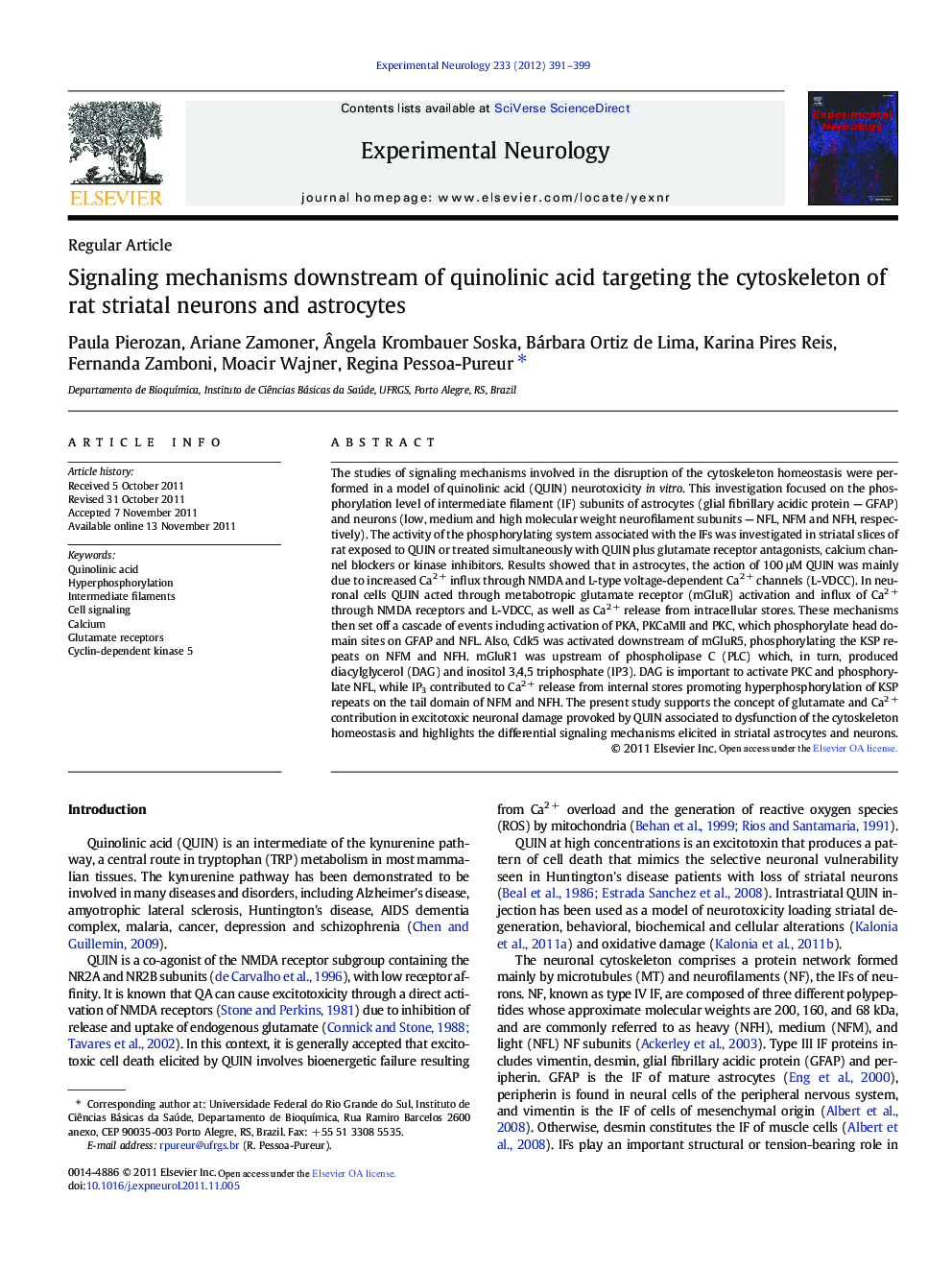| کد مقاله | کد نشریه | سال انتشار | مقاله انگلیسی | نسخه تمام متن |
|---|---|---|---|---|
| 6019116 | 1186532 | 2012 | 9 صفحه PDF | دانلود رایگان |

The studies of signaling mechanisms involved in the disruption of the cytoskeleton homeostasis were performed in a model of quinolinic acid (QUIN) neurotoxicity in vitro. This investigation focused on the phosphorylation level of intermediate filament (IF) subunits of astrocytes (glial fibrillary acidic protein - GFAP) and neurons (low, medium and high molecular weight neurofilament subunits - NFL, NFM and NFH, respectively). The activity of the phosphorylating system associated with the IFs was investigated in striatal slices of rat exposed to QUIN or treated simultaneously with QUIN plus glutamate receptor antagonists, calcium channel blockers or kinase inhibitors. Results showed that in astrocytes, the action of 100 μM QUIN was mainly due to increased Ca2 + influx through NMDA and L-type voltage-dependent Ca2 + channels (L-VDCC). In neuronal cells QUIN acted through metabotropic glutamate receptor (mGluR) activation and influx of Ca2 + through NMDA receptors and L-VDCC, as well as Ca2 + release from intracellular stores. These mechanisms then set off a cascade of events including activation of PKA, PKCaMII and PKC, which phosphorylate head domain sites on GFAP and NFL. Also, Cdk5 was activated downstream of mGluR5, phosphorylating the KSP repeats on NFM and NFH. mGluR1 was upstream of phospholipase C (PLC) which, in turn, produced diacylglycerol (DAG) and inositol 3,4,5 triphosphate (IP3). DAG is important to activate PKC and phosphorylate NFL, while IP3 contributed to Ca2 + release from internal stores promoting hyperphosphorylation of KSP repeats on the tail domain of NFM and NFH. The present study supports the concept of glutamate and Ca2 + contribution in excitotoxic neuronal damage provoked by QUIN associated to dysfunction of the cytoskeleton homeostasis and highlights the differential signaling mechanisms elicited in striatal astrocytes and neurons.
⺠Quinolinic acid disrupts the homeostasis of the cytoskeleton in striatal slices. ⺠Hyperphosphorylation is mediated by different signaling mechanisms. ⺠In astrocytes, the increase was by Ca2 + influx through NMDA receptors and L-VDCC. ⺠In neurons, it was by mGluR1, mGluR5, NMDA, L-VDCC, and stored Ca2 + release. ⺠Membrane receptors and channels are upstream of PKA, PKCaMII, PKC and cdk5 activation.
Journal: Experimental Neurology - Volume 233, Issue 1, January 2012, Pages 391-399